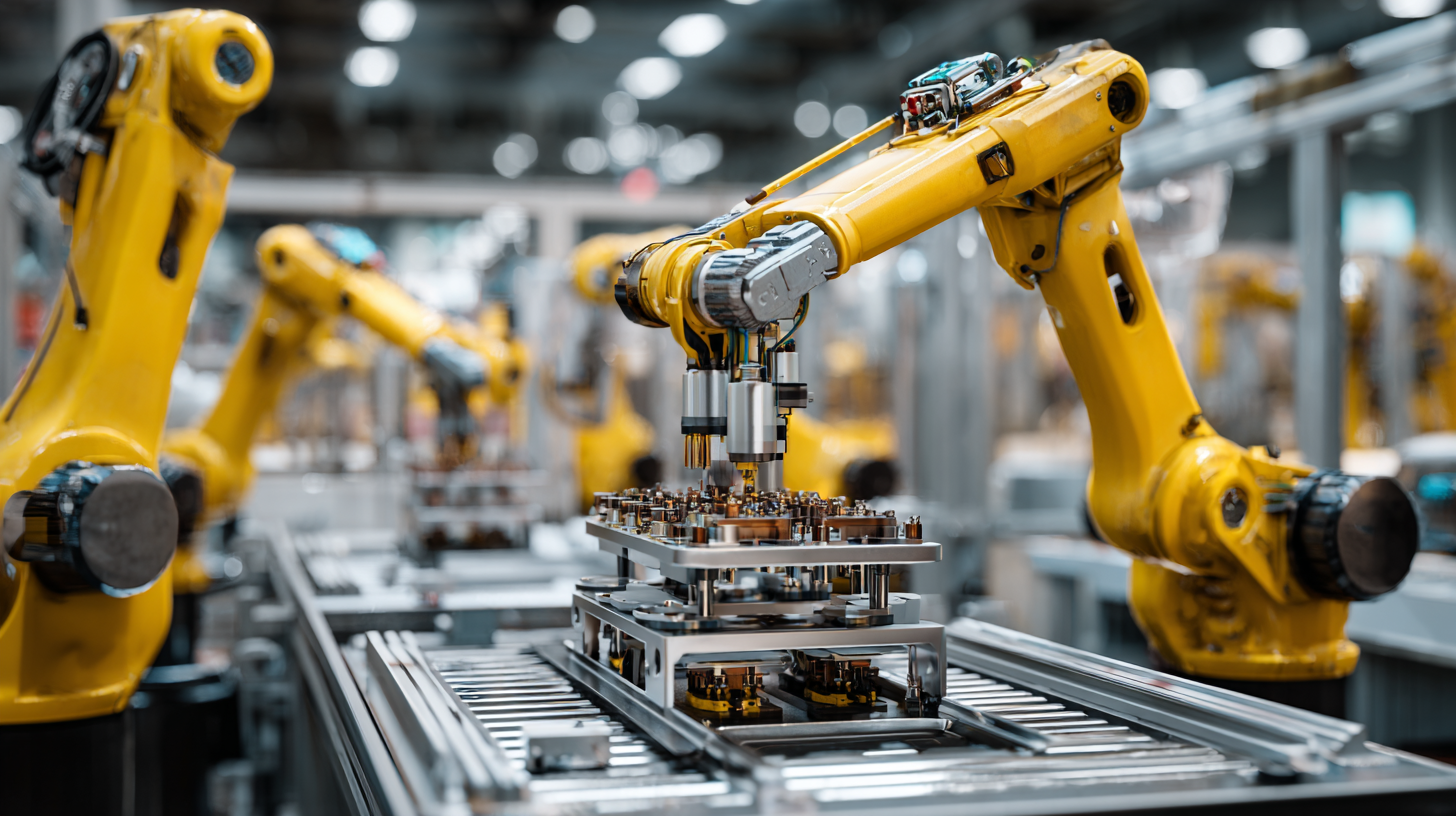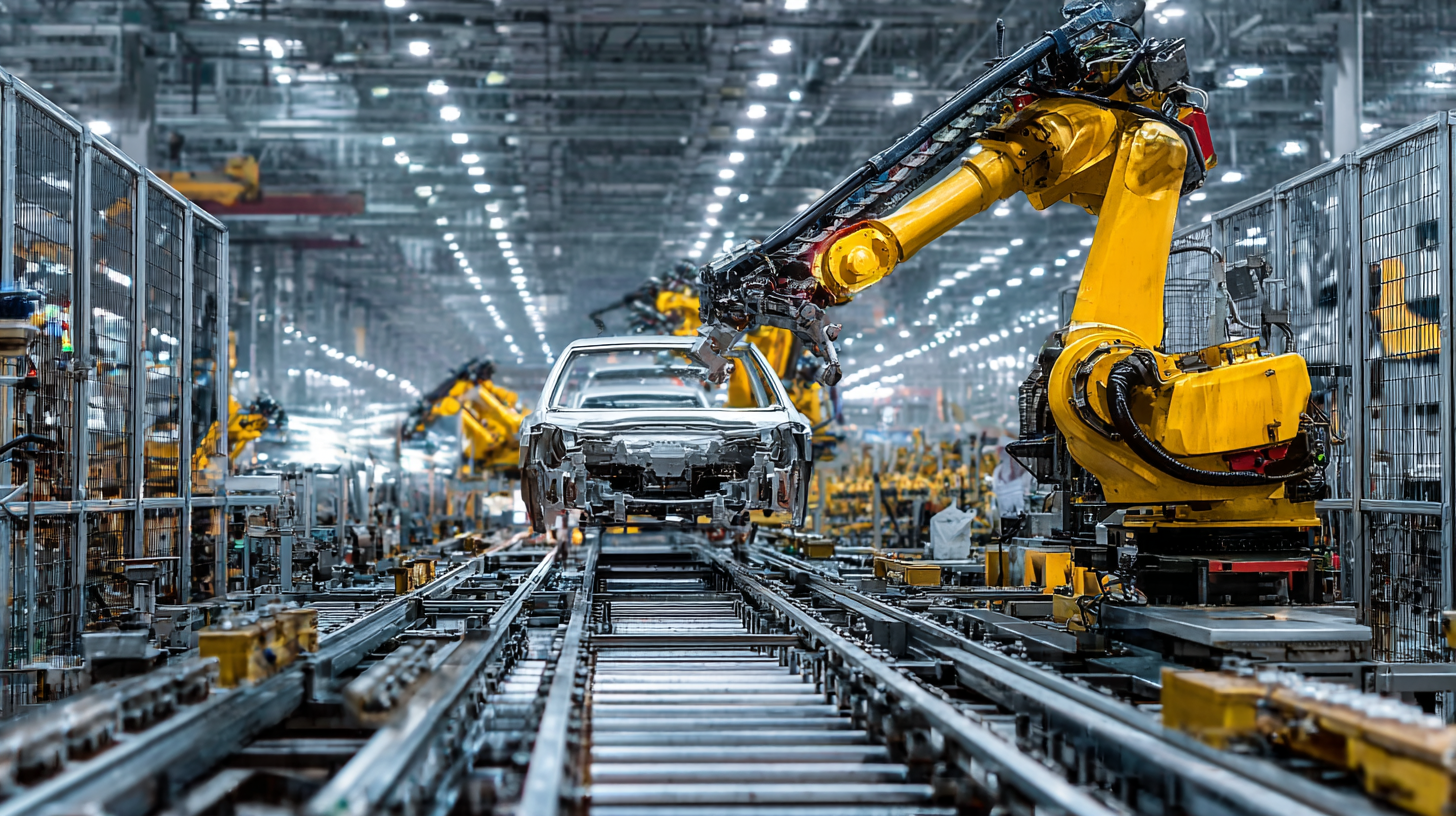In today's rapidly evolving manufacturing landscape, understanding the impact of automation machinery is crucial for businesses striving to remain competitive. Automation machinery encompasses a wide array of technologies designed to streamline production processes, enhance productivity, and reduce human error. As industries embrace these innovations, the integration of automation machinery not only transforms traditional workflows but also introduces new challenges and opportunities. Companies that effectively harness the potential of automation machinery can expect to see significant improvements in efficiency and cost-effectiveness.

This guide will explore various strategies on how to implement automation machinery effectively in modern manufacturing processes, ensuring organizations can adapt to the dynamics of a fast-paced market while maximizing their operational capabilities. By delving into best practices, potential pitfalls, and the future of automation in manufacturing, we aim to equip businesses with the knowledge necessary to thrive in this automated era.
 Automation machinery has transformed modern manufacturing by significantly enhancing operational efficiency. According to a report by McKinsey & Company, adopting automation technology can increase productivity by up to 25% in certain industries. This shift not only streamlines production processes but also reduces labor costs and minimizes human error, leading to higher-quality outputs. For instance, manufacturers utilizing robotic systems can achieve faster turnaround times, allowing them to meet consumer demands more effectively.
Automation machinery has transformed modern manufacturing by significantly enhancing operational efficiency. According to a report by McKinsey & Company, adopting automation technology can increase productivity by up to 25% in certain industries. This shift not only streamlines production processes but also reduces labor costs and minimizes human error, leading to higher-quality outputs. For instance, manufacturers utilizing robotic systems can achieve faster turnaround times, allowing them to meet consumer demands more effectively.
Moreover, a study conducted by the International Federation of Robotics (IFR) found that advanced automation machinery, such as collaborative robots (cobots), has seen an annual growth rate of 25%, particularly in sectors like automotive and electronics. These cobots work alongside human operators, enhancing their capabilities and allowing for a safer workplace environment. By integrating automation machinery, companies can not only elevate their manufacturing processes but also remain competitive in an increasingly digital economy. The continual evolution of these technologies promises to unlock even greater efficiencies and innovations in the years to come.
The integration of automation machinery into modern manufacturing processes has significantly transformed the industry, especially in terms of reducing labor costs. A recent initiative in Gansu Province showcases this trend with the launch of the first fully automated intelligent steel arch robot processing demonstration line. This facility aims to optimize production efficiency while minimizing labor dependency in high-demand sectors, such as construction.
According to a report by Goldman Sachs, approximately two-thirds of American jobs are expected to be impacted by automation, with many roles facing significant changes rather than outright layoffs. This shift is indicative of a broader movement towards "machine substitution" in manufacturing, which enhances productivity while reducing workforce requirements. For instance, in the textile industry, the rise of digital management tools and virtual modeling has allowed companies to streamline operations and cut costs, reflecting a strong industry trend towards automation.
Moreover, the concept of Industry 4.0 emphasizes the merging of advanced digital technologies within manufacturing processes, which is anticipated to further drive labor cost reductions. Research indicates that as companies adopt intelligent technologies, productivity can increase significantly, redefining labor roles and solidifying the future of automated manufacturing systems.
This chart illustrates the reduction in labor costs associated with the implementation of automation machinery in manufacturing over five years. The data reflects average cost savings achieved by various manufacturing sectors.
Automation machinery has significantly transformed quality control in modern manufacturing processes. The integration of automated systems ensures consistent product quality by minimizing human error and enhancing precision. Through advanced technologies such as machine vision and AI-driven analytics, manufacturers can monitor processes in real-time, allowing for immediate adjustments and reducing defect rates. This shift not only improves the overall reliability of products but also optimizes the resource allocation, contributing to cost efficiency.
**Tip:** Incorporate regular training sessions for staff to familiarize them with new automated systems. This will help bridge the gap between technology and human skills, ensuring that quality control teams can effectively utilize these tools for optimal performance.
Furthermore, automation facilitates data collection and analysis, enabling manufacturers to identify trends over time. With access to vast amounts of data, quality control teams can pinpoint specific areas for improvement, driving continuous enhancement of manufacturing processes. Automated reporting also aids in adhering to industry standards and regulations, providing a transparent overview of quality metrics.
**Tip:** Utilize predictive maintenance techniques to anticipate machine failures before they occur. This proactive approach not only enhances quality control but also extends the lifespan of machinery, ensuring ongoing production reliability.
| Dimension | Before Automation | After Automation |
|---|---|---|
| Defect Rate (%) | 5.0 | 1.2 |
| Production Time (hours) | 40 | 24 |
| Total Output (units) | 500 | 800 |
| Labor Costs ($) | 10000 | 6000 |
| Cycle Time (minutes) | 30 | 18 |
In today's fast-paced business landscape, adapting to automation trends is not just beneficial—it's essential for maintaining competitiveness. As highlighted in the McKinsey Technology Trends Outlook, companies that embrace frontier technologies are more likely to thrive despite uncertainties. Automation machinery plays a pivotal role in this evolution, allowing businesses to streamline processes, enhance productivity, and reduce costs significantly. The adoption of AI and automation not only improves operational efficiency but also helps organizations to respond swiftly to market changes and customer demands.
**Tips:** To successfully integrate automation, businesses should first assess their current processes and identify areas that can benefit from technological enhancements. Prioritizing investments in AI can lead to valuable insights for trend prediction and customer engagement, ultimately aiding in customization efforts. Furthermore, companies should be prepared to adjust their IT budgets as the demand for AI-driven solutions escalates, fostering innovation and resilience in the face of global challenges. Embracing these automation trends will not only provide a competitive edge but also lay the groundwork for sustainable growth in the future.
The environmental benefits of automation in manufacturing systems are becoming increasingly significant as industries strive for sustainability. Automated machinery often operates with higher precision and efficiency compared to traditional methods, reducing waste generated during production. By minimizing material consumption and enhancing yield, companies can significantly decrease their overall ecological footprint. This precision not only lowers costs but also conserves natural resources, making automation a key player in eco-friendly manufacturing.

Moreover, automation technologies enable manufacturers to optimize energy use, further contributing to environmental sustainability. Intelligent systems can monitor energy consumption in real-time and adjust processes to ensure that energy is used only when necessary. This not only reduces greenhouse gas emissions but also promotes accountability in energy management, encouraging a shift towards renewable sources where possible. By integrating automation, manufacturers can transform their operations into more sustainable practices, paving the way for a cleaner, greener future.